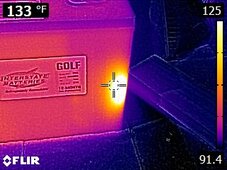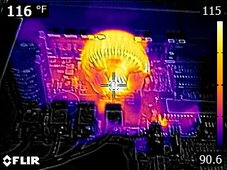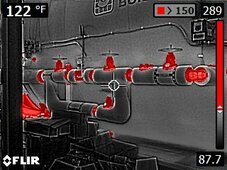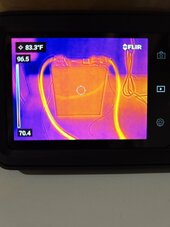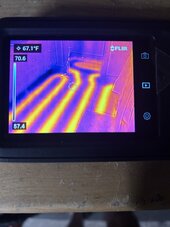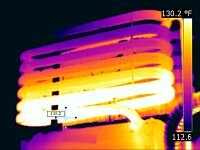Boron
New Member
FWIW guys - I had a shock.
I bit the bullet and laid out ca $200 for a proper hand held IR camera with his res (not a widget you plug in the USB C of your phone. If your are doing serious work (detecting potential hot spots in cable joints and cct boards etc) then dont was money on Cheap Charlie toys when you need a tool IMHO.
So I fired up my unit and it all went well, then started scanning around the room first as you do.
Imagine my astonishment when it lit up on and adapted power block as used on a laptop. It was ca 55C real hand hot, not what I expected as the laptop was closed and asleep.
Yes on inspection it was a Cheap charlie type. I checked some other blocks and all rest were cool unremarkable.
So the take away is - the IR cam has justified its cost already as I would never likely have spotted this hot spot otherwise. Would be a fire risk? I wouldnt risk it - bin it.
I dont want to break rules here and push products but do your homework and look for IR res (not screen res) of 256x192.
It seems to me that in the Solar world with high currents etc its one of those must have test gear pieces now they are maybe 1/10 of price when they first came out few years back.
I will post some more info as I gain usage - IMHO you never knew you needed it till you used a semi pro one. AFAIK solar panel installers have these as standard to check those dodgy MC4s
Thats my 2c
I bit the bullet and laid out ca $200 for a proper hand held IR camera with his res (not a widget you plug in the USB C of your phone. If your are doing serious work (detecting potential hot spots in cable joints and cct boards etc) then dont was money on Cheap Charlie toys when you need a tool IMHO.
So I fired up my unit and it all went well, then started scanning around the room first as you do.
Imagine my astonishment when it lit up on and adapted power block as used on a laptop. It was ca 55C real hand hot, not what I expected as the laptop was closed and asleep.
Yes on inspection it was a Cheap charlie type. I checked some other blocks and all rest were cool unremarkable.
So the take away is - the IR cam has justified its cost already as I would never likely have spotted this hot spot otherwise. Would be a fire risk? I wouldnt risk it - bin it.
I dont want to break rules here and push products but do your homework and look for IR res (not screen res) of 256x192.
It seems to me that in the Solar world with high currents etc its one of those must have test gear pieces now they are maybe 1/10 of price when they first came out few years back.
I will post some more info as I gain usage - IMHO you never knew you needed it till you used a semi pro one. AFAIK solar panel installers have these as standard to check those dodgy MC4s
Thats my 2c



